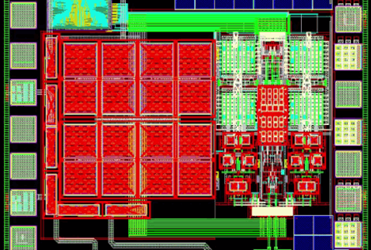Can NSF Researchers Break The Laws Of Physics?
By Jof Enriquez,
Follow me on Twitter @jofenriq

Nine engineering-led interdisciplinary teams of researchers from 17 institutions across the United States are attempting to defy the laws of classical physics with potentially groundbreaking optical and acoustic studies funded by the National Science Foundation (NSF).
Over the next four years, the NSF's Emerging Frontiers in Research and Innovation (EFRI) program will provide scientists with $18 million to research the emerging area they call New Light and Acoustic Wave Propagation: Breaking Reciprocity and Time-Reversal Symmetry (NewLAW).
Scientists believe that studying and manipulating the behavior of light and sound waves could make it possible to design and construct a new class of electronic, photonic, and acoustic devices capable of new functionalities not achievable by current technology. Most current systems exhibit properties of reciprocity and time-reversal symmetry, whereby electromagnetic or acoustic waves tend to travel the same way for both forward and reverse directions. However, light and sound waves tend to lose energy when encountering an obstacle.
Breaking symmetry by manipulating the behavior of waves so that they continue to travel in one direction – skirting an obstacle or be absorbed by it – could be key to more stable yet complex systems and devices.
"We want to break reciprocity on purpose," said Massimo Ruzzene, who coordinated EFRI NewLAW during his rotation as an NSF program officer, in a news release. "The idea is to take waves and make them do things that were physically not possible before, such as bending light, radio waves or sound around an object, guiding them along a specific path, or completely absorbing them."
The ability to break reciprocity and time reversal symmetry could have applications for everything from ultrasound imaging and environmental noise reduction, to more compact and efficient wireless communications systems and photonic circuits, states the release. Scientists experimenting with metamaterials, which are artificial materials with the ability to bend electromagnetic waves around them, could also help devise improved systems.
"We can take advantage of variations in wave interaction to make radio frequency systems more compact, efficient and interference resilient," said Dimitris Pavlidis, NSF program officer who coordinated the NewLAW electronic and photonic efforts. "Try passing an item to someone on a moving merry-go-round while you stand on the ground. It’s much easier to do so if you are running the same direction, at the same speed. Now replace the people with waves; this is a non-reciprocal, yet successful, interaction. Such an achievement for radio frequencies can lead to revolutionary system applications from autonomous vehicles to big data."
One research grantee, a team of engineers at the University of Texas at Austin, aims to design and build “a new class of devices based on nanophotonic, radio-wave, acoustic, elastic, mechanical interactions and their combinations” which they hope will deliver “enhanced data-rate and spectrum efficiency for the telecom industry, enhanced acoustic imaging for the healthcare industry, sensing concepts for civil resource management and the defense industry.”
Another group at Washington University, meanwhile, attempts to carry out “strategies to violate time-reversal symmetry and induce non-reciprocal light transport in nano-, micro-, and macro-scale photonic systems.”
Besides NewLAW, the NSF EFRI program's other area of focus is Advancing Communication Quantum Information Research in Engineering (ACQUIRE), a $12 million investment into university-based research to develop systems that use photons in pre-determined quantum states as a way to encrypt data.
